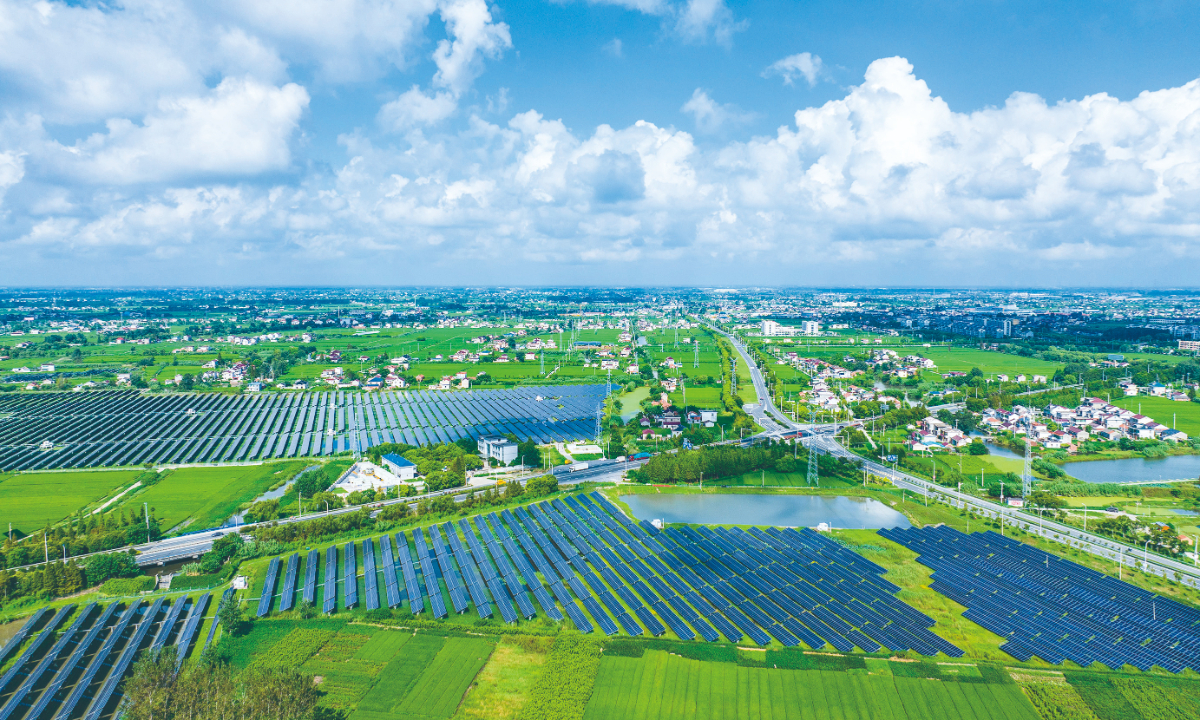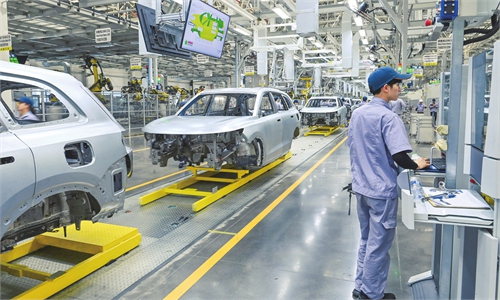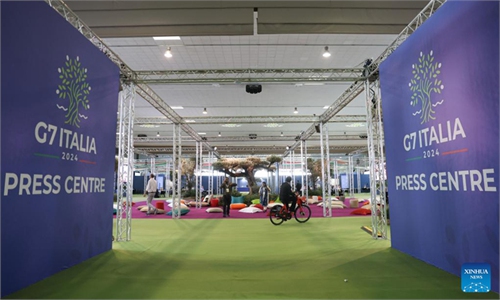

A photovoltaic power station project in Nantong, East China’s Jiangsu Province Photo: VCG
Some politicians in the US continue to promote the narrative of "China's overcapacity," despite it being inconsistent with economic principles and factual evidence. Such irresponsible rhetoric only serves as an excuse for advocating trade protectionism.
China's competitive advantage in manufacturing new-energy products stems from the country's active technological innovation, a fairly developed industrial system and supply chain, a vast domestic market, and China's strategic commitment to promoting green development. In terms of technological innovation, from 2016 to 2023, China's share of authorized patents for green and low-carbon technology inventions in the global total reached 44.9 percent, the highest in the world.
The rapid development of the "new three" industries - new-energy vehicles, lithium batteries and solar photovoltaic products - is supported by numerous patented technologies.
All the more, China has an independent and complete modern industrial system, being the only country in the world that possesses all the industrial categories in the UN industrial classification.
In the field of new energy development, China is actively building a modern industrial chain, such as the new-energy vehicle (NEV) industry chain, covering upstream raw materials like lithium carbonate, midstream lithium batteries, and downstream vehicle manufacturing and charging piles, all of which are competitive compared with other market players.
What is more important is that China's NEV industry chain has been steadfastly pursuing globalization, optimizing resource allocation through active participation in international cooperation.
And, both the Chinese government and Chinese enterprises place significant emphasis on low-carbon green development. They are actively enhancing the environment for electric vehicle (EV) usage by investing in extensive charging infrastructure, which greatly facilitates the widespread adoption of EVs.
In its strategic commitment to green development, China views harmonious coexistence between humanity and nature as the integral part of Chinese modernization. The country is dedicated to accelerating the transition to a green and low-carbon development model. It has established a top-level framework aimed at reaching peak carbon dioxide emissions before 2030 and achieving carbon neutrality by 2060.
To support these goals, China has formulated a comprehensive set of systemic and robust policy measures designed to actively and steadily promote carbon peaking and carbon neutrality.
The subsidies available in the US, both in terms of scale and specificity, significantly surpass those in China. For instance, the US Inflation Reduction Act enhances the tax credit for consumers purchasing EVs, offering up to $7,500 per unit. It also mandates that the vehicle's final assembly occurs in North America, and that battery components and critical minerals must originate from designated regions to qualify for the US government's subsidy.
These regulations restrict competition from countries like China. If subsidies were genuinely a reliable means of enhancing competitiveness, the NEV sector in the US would have outpaced China's.
Sales of photovoltaic products and NEVs are experiencing rapid growth. As the power sector transitions to cleaner energy sources, electrification has emerged as a vital strategy for reducing greenhouse gas emissions. From a long-term demand perspective, to support sustainable development for humanity, China's new-energy production capacity is insufficient, which needs further expansion.
The US frequently employs anti-dumping measures as instruments of trade protectionism.
To protect the interests of US new-energy companies, some US politicians have concocted "Chinese overcapacity" narrative as an excuse for implementing trade protectionist measures. But protectionist approaches in the end undermine the interests of US consumers, denying them access to cost-effective and environmentally friendly products, while negatively affecting employment and social welfare.
The indiscriminate labeling of other countries' industries and reliance on protectionism by the US not only harms other nations but also harms its own interests in the end.
The author is Associate Research Fellow at the Institute of Industrial Economics, the Chinese Academy of Social Sciences (CASS). bizopinion@globaltimes.com.cn



